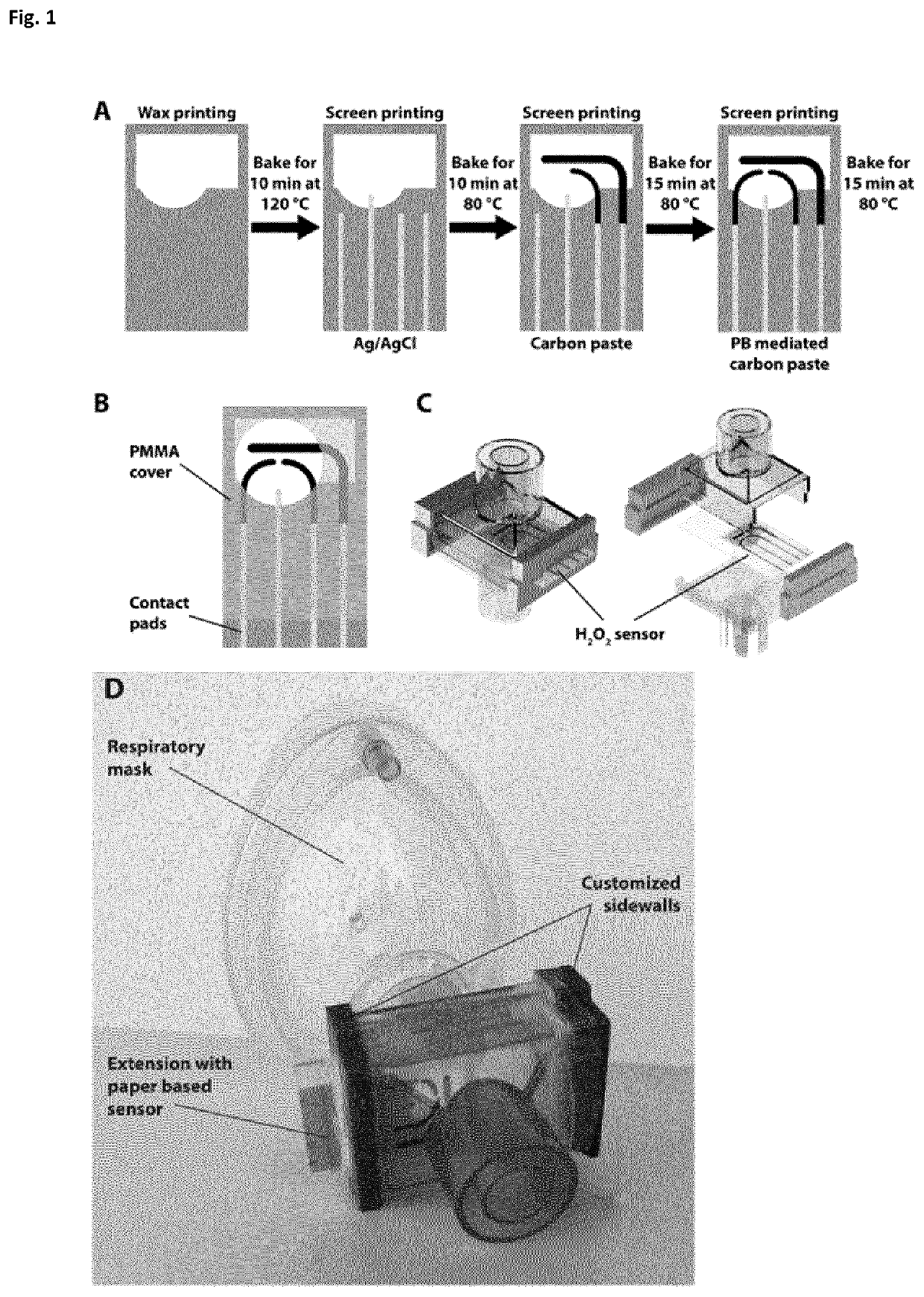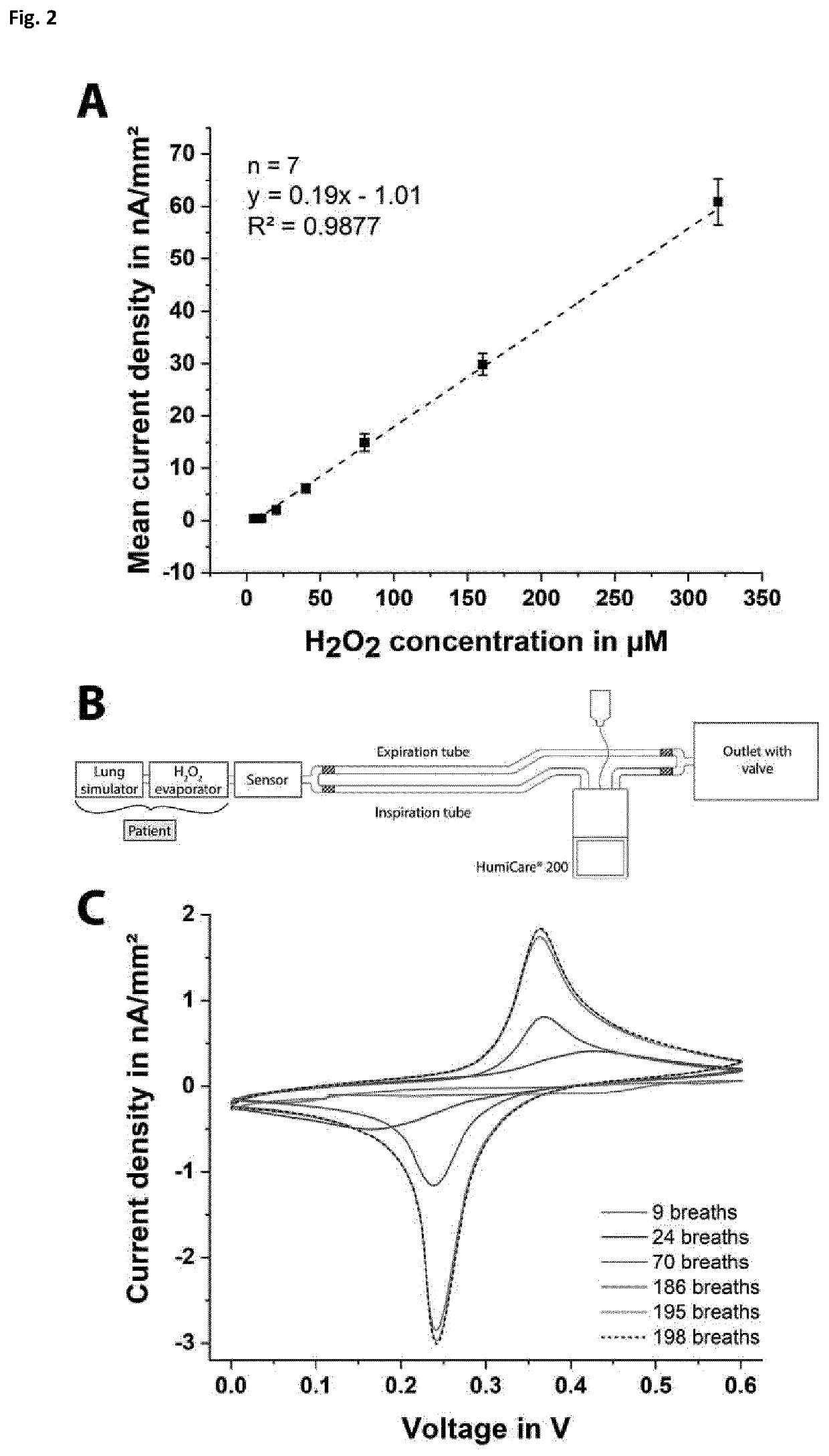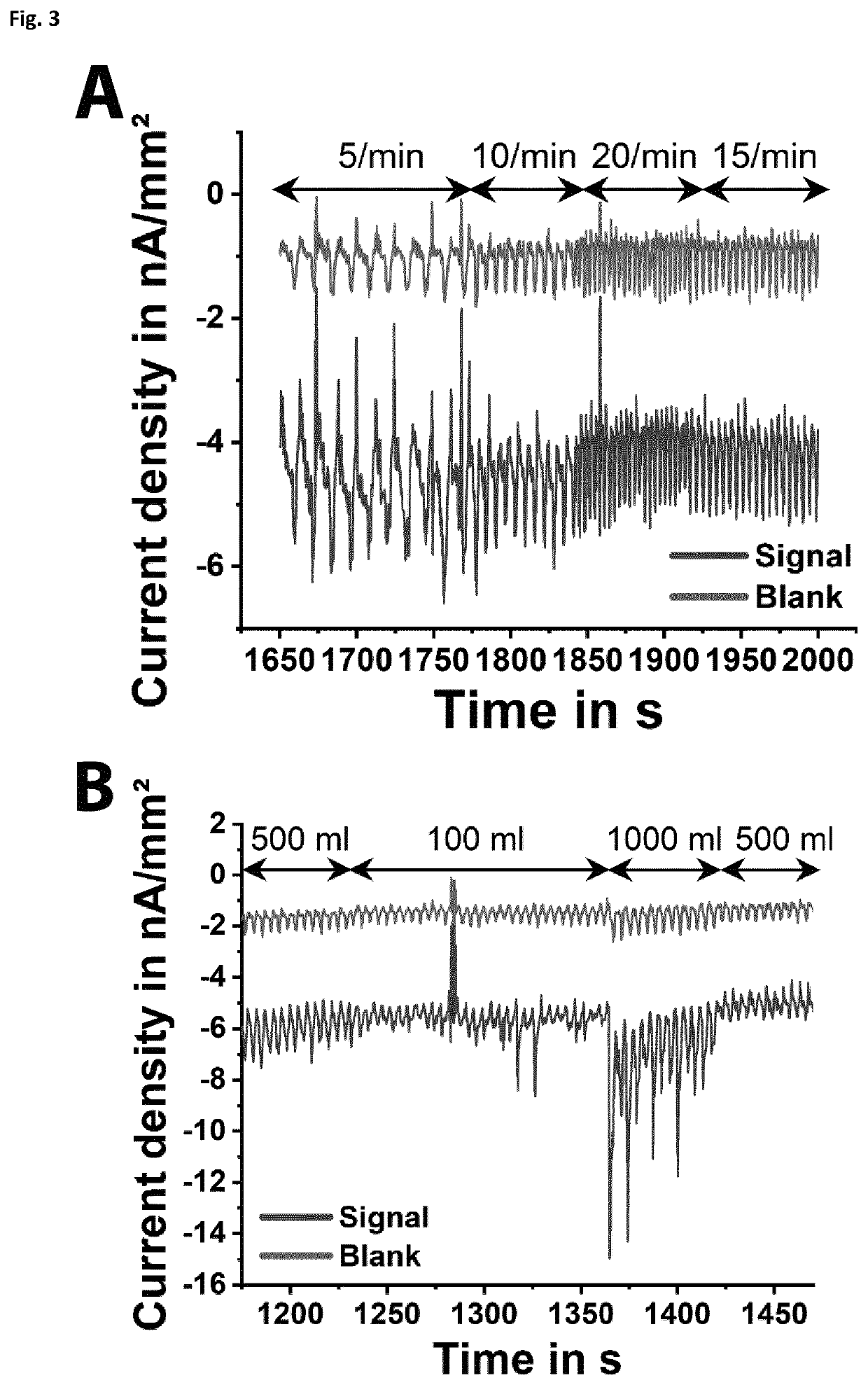Disposable wearable sensor for continuous monitoring of breath biochemistry
a wearable sensor and biochemistry technology, applied in the field of disposable wearable sensors for continuous monitoring of breath, can solve the problems of severe health problems, h/sub>2/sub> is difficult to measure in exhaled breath, and the global air pollution is rising at an alarming ra
- Summary
- Abstract
- Description
- Claims
- Application Information
AI Technical Summary
Benefits of technology
Problems solved by technology
Method used
Image
Examples
example 1
on Procedure for the Electrochemical Sensor
[0221]The fabrication procedure for the paper sensors is illustrated schematically in FIG. 1A. First, wax patterns are printed on chromatography paper (grade 1 CHR, 200×200 mm2, Whatman, UK) using a commercially available wax printer (ColorQube 8580, Xerox corporation, US) and baked for 10 minutes at 120° C. in a conventional oven. When heated, the layer of wax printed on the surface of paper wicks through the bulk of the substrate and forms a hydrophobic barrier, defining the electrolytic cell. The wax barrier plays two important roles: i) It prevents wicking of any droplets of water condensed during exhalation to the contact pads during operation. ii) The wax pattern contains a solution of electrolyte before the water is evaporated from the substrate to form a solid-electrolyte. Next, the Ag / AgCl reference electrode (RE) and conducting tracks are screen-printed and baked for 10 minutes at 80° C. Finally, the carbon counter (CE), blank and...
example 2
on and Amperometric Measurements Using the Sensor
[0224]For the calibration of the paper based H2O2 sensor, the current behaviour over time is recorded for different hydrogen peroxide concentrations. Amperometry at a constant potential of 0.0 V versus Ag / AgCl (screen-printed RE electrode) is carried out using different paper chips (n=7). The frontside of the electrodes is isolated using an adhesive tape, as the paper sensors are positioned in the respiratory mask with the backside facing the user, hence, the frontside of the electrode structures has no direct contact with the exhaled breath. First, a droplet of 1 M KCl solution is placed on the electrolytic cell of the paper chip, and then, measurements with increasing the H2O2 concentration are performed. The obtained calibration curve is shown in FIG. 2A. Here, a linear measurement range between 5 to 320 μM hydrogen peroxide is achieved with a sensitivity of 0.19 nA μM−1 mm−2 and a correlation coefficient of 0.99.
[0225]To mimic the...
example 3
d Proof-of-Principle for a Paper-Based Glucose Sensor
[0235]Chip Design and Fabrication for a Paper-Based Glucose Sensor
[0236]The design and fabrication procedure for the paper-based glucose sensors were carried out according the methods described above in relation a paper-based hydrogen peroxide sensor and shown schematically in FIG. 16.
[0237]The only difference in the chip design is the use of two identical compartments, separated with wax, but still employing a common reference and a counter electrode. The fabrication starts with printing wax patterns on the chromatography paper (grade 1 CHR, 200×200 mm2, Whatman, U.K.) by means of a commercial wax printer (ColorQube 8580, Xerox corporation, USA). This is followed by a 10-min bake at 120° C. in an oven which results in the wicking of wax printed through the paper substrate and thus, defines a hydrophilic area for the electrolytic cell. At the next step, the reference electrode (RE) and conducting tracks are screen-printed with sil...
PUM
 Login to View More
Login to View More Abstract
Description
Claims
Application Information
 Login to View More
Login to View More - R&D
- Intellectual Property
- Life Sciences
- Materials
- Tech Scout
- Unparalleled Data Quality
- Higher Quality Content
- 60% Fewer Hallucinations
Browse by: Latest US Patents, China's latest patents, Technical Efficacy Thesaurus, Application Domain, Technology Topic, Popular Technical Reports.
© 2025 PatSnap. All rights reserved.Legal|Privacy policy|Modern Slavery Act Transparency Statement|Sitemap|About US| Contact US: help@patsnap.com



